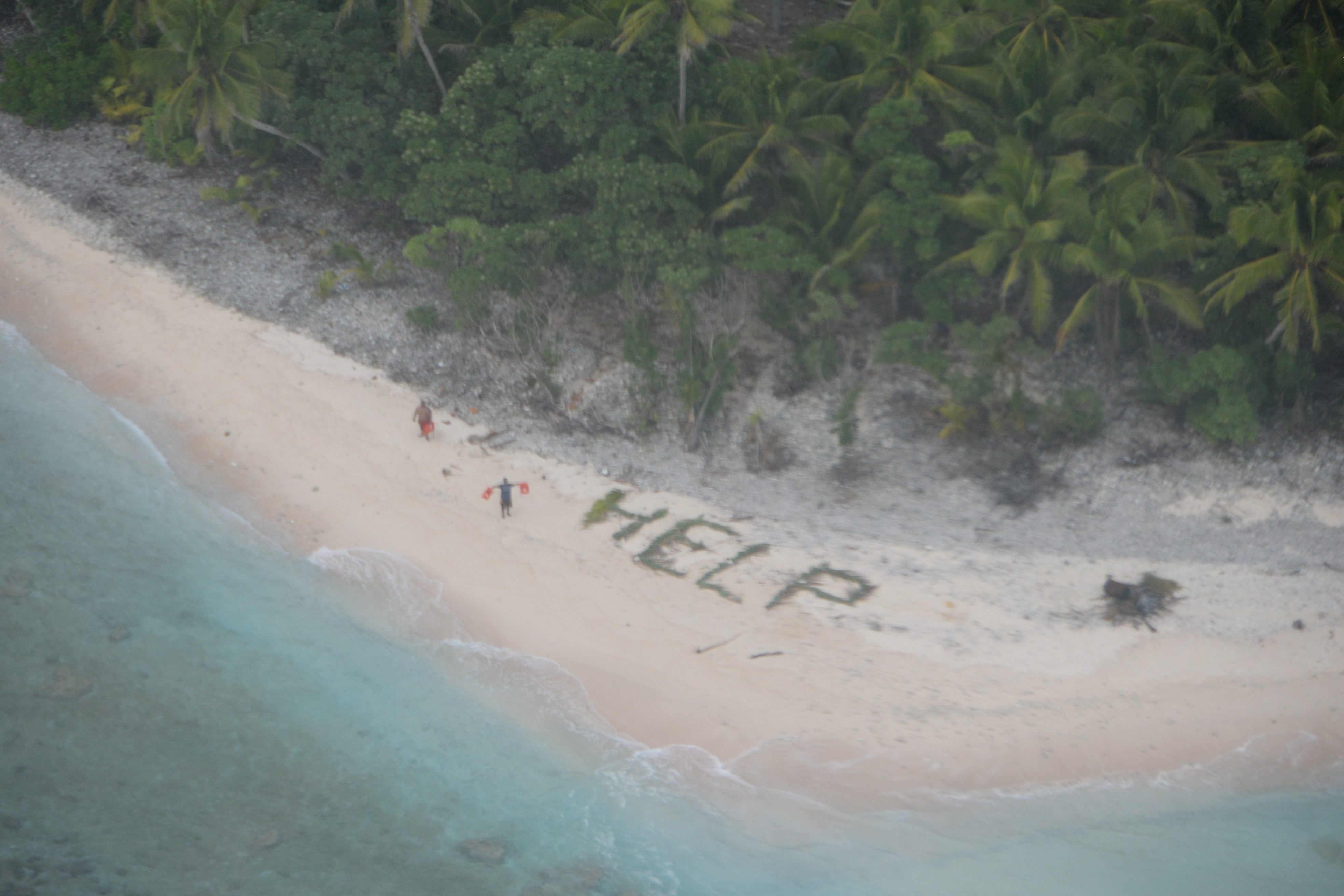The One Castaway Trick That You Need to Know to Be Rescued
The “giant makeshift sign” trick comes through again.

Two men wave life jackets and look on as a U.S. Navy P-8A maritime surveillance aircraft discovers them on the uninhabited island of Fanadik. (Photo: U.S. Navy/Public Domain)

If you think the proliferation of smartphones, high-speed internet, and satellite imaging means it’s impossible to be stranded on an uninhabited island in 2016, we have bad news. Just this week, three men were rescued from the small island of Fandika, north of Papua New Guinea, after their skiff capsized a few hours into their trip, forcing them to swim to the island’s shore.
Obtaining rescue required more primitive technology than a ride-hailing app—the three men used palm fronds to create a giant “HELP” sign on the beach, standing by the sign and waving their orange lifejackets to help attract attention.
Luckily, the makeshift signal was spotted by a Navy plane searching the area after the men were reported missing Tuesday morning. Miraculously, the plane had only begun the search two hours earlier, according to a U.S. Coast Guard news release. Lieutenant William White attributed the rapid rescue to “many different resources” of “combined efforts”.
These collaborative search-and-rescue efforts are facilitated by AMVER, a worldwide reporting system, established by the Coast Guard in 1958, that allows rescue coordinators to enlist participating commercial vessels’ assistance in rescue operations. Over the past two weeks alone, the Coast Guard 14th District—responsible for the region of the Pacific where the men were stranded—has saved 15 people in coordinated rescue efforts with the help of AMVER vessels.
This is particularly impressive when you consider that the 14th District covers an area almost twice the size of Russia—12.2 million miles of land and sea.
The Coast Guard isn’t taking all the credit, however. In an official Facebook post, the Coast Guard explained that the “[i]ngenuity of these men to build their sign and the preparedness of having lifejackets also contributed to their safe rescue.” After the men were spotted by the Navy plane, their families were notified of their safety and a ship was dispatched to pick up the men and transport them back to their departure point, the island of Pulap.
The lesson here is clear: always wear a lifejacket, and keep basic sign-making techniques in mind the next time you head out to sea.







Follow us on Twitter to get the latest on the world's hidden wonders.
Like us on Facebook to get the latest on the world's hidden wonders.
Follow us on Twitter Like us on Facebook